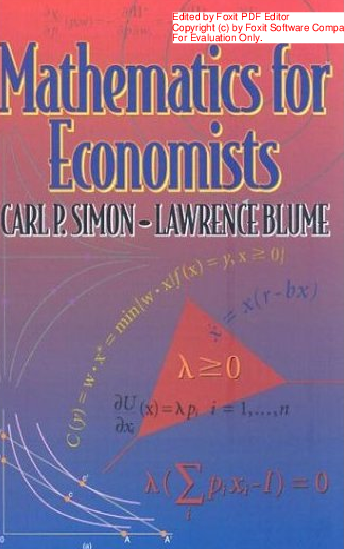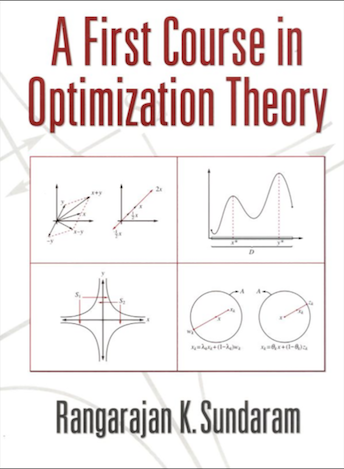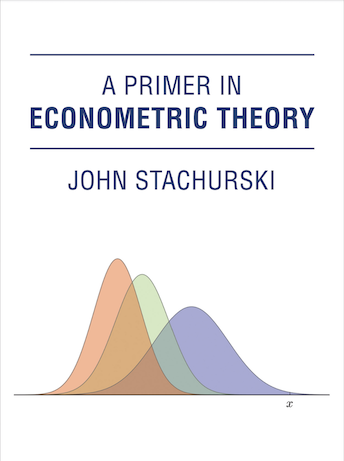Welcome#
Course title: “Optimization for Economics and Financial Economics”
Elective second year course in the Bachelor of Economics program ECON2125
Compulsory second math course in the Master of Economics program ECON6012
The two courses are identical in content and assessment, but final grades may be adjusted depending on your program.
Plan for this lecture#
Organization
Administrative topics
Course content
Self-learning materials
Instructor#
Fedor Iskhakov Professor of Economics at RSE
Office: 1021 HW Arndt Building
Email: fedor.iskhakov@anu.edu.au
Web: fedor.iskh.me
Contact hours: Thursday 9:30-11:30
Timetable#
Face-to-face:
Lectures: Thursday 15:30 — 17:30
Location: DNF Dunbar Lecture Theatre, Physics Bldg 39A
Online:
Echo-360 recordings on Wattle
All notes and materials on optim.iskh.me
Face-to-face is strictly preferred
Course web pages#
Wattle Schedule, announcements, teaching team contacts, recordings, assignment, grades
Online notes Lecture notes, slides, assignment tasks
Lecture slides should appear online the previous day before the lecture
Details on assessment including the exam instructions will appear on Wattle
Tutorials#
Enrollments open on Wattle
Tutorial questions
posted on the course website
not assessed, help you learn and prepare
Tutorials start on week 2
Tutors#
Wending Liu
Email: Wending.Liu@anu.edu.au
Room: Room 2084, Copland Bld (24)
Office hours: Friday 1pm-3pm
Chien Yeh
Email: Chien.Yeh@anu.edu.au
Room: Room 1010, HW Arndt Bld (25a)
Office hours: Monday 2pm-4pm
Prerequisites#
See Course overview and Class summary
What you actually need to know:
basic algebra
basic calculus
some idea of what a matrix is, etc.
≈ content of EMET1001/EMET7001 math course
Focus?#
Q: Is this optimization or a general math-econ course?
A: A general course on mathematical modeling for economics and financial economics. Optimization will be an important and recurring theme.
Assessment#
3 timed open book tests (15% each)
Final exam (55%)
The three tests spread out through the semester will check the knowledge of the immediately preceding material. The final closed book in-person exam will cover the entire course.
Questions#
Administrative questions: RSE admin
Bronwyn Cammack Senior School Administrator
Email: enquiries.rse@anu.edu.au
“I can not register for the tutorial group”
Content related questions: please, refer to the tutors
“I don’t understand why this function is convex”
Other questions: to Fedor
“I’m working hard but still can not keep up”
“Can I please have extra assignment for more practice”
Attendance#
Please, do not use email for instructional questions\Instead make use of the office hours
Attendance of tutorials is very highly recommended
You will make your life much easier this wayAttendance of lectures is highly recommended
But not mandatory
Definitions and facts#
The lectures notes/slides are full of definitions and facts.
Definition
Functions \(f: \mathbb{R} \rightarrow \mathbb{R}\) is called continuous at \(x\) if, for any sequence \(\{x_n\}\) converging to \(x\), we have \(f(x_n) \rightarrow f(x)\).
Possible exam question: “Show that if functions \(f\) and \(g\) are continuous at \(x\), so is \(f+g\).”
You should start the answer with the definition of continuity:
“Let \(\{x_n\}\) be any sequence converging to \(x\). We need to show that \(f(x_n) + g(x_n) \rightarrow f(x) + g(x)\). To see this, note that …”
Facts#
In the lecture notes/slides you will often see
Fact
The only \(N\)-dimensional subset of \(\mathbb{R}^N\) is \(\mathbb{R}^N\).
This means either:
theorem
proposition
lemma
true statement
All well known results. You need to remember them, have some intuition for, and be able to apply.
Note on Assessments#
Assessable = definitions and facts + last year level math + a few simple steps of logic
Exams and tests will award:
Hard work
Deeper understanding of the concepts
In each question there will be a easy path to the solution
Reading materials#
Primary reference: lecture slides
Books:



“Mathematics for Economists” (1994) by Simon, C. and L. Blume
“A First Course in Optimization” (1996) Theory by Rangarajan Sundaram
“A Primer in Econometric Theory” (2016) by John Stachurski
Readings are supplementary but will provide a more detailed explanation with additional examples.
Each lecture will reference book chapters
Key points for the administrative part#
Tutorials start next week, please register before the next lecture
Course content = what’s in lecture notes/slides
Lecture slides are available online and will be updated throughout the semester
Optimization is a recurring theme but not the only topic
What you will learn in the course#
The lecture plan is on the course website optim.iskh.me and Class summary
See the list of topics on the left
Essentially:
Mathematical foundations
elements of analysis
elements of linear algebra
elements of probability
Optimization theory
when solution exists
unconstrained optimization
optimization with equality constraints
optimization with inequality constraints
Further topics
Parameterized optimization problems
Optimization in dynamics
Further material and self-learning#
Each lecture will suggest some material for further reading and learning
Today: The Wason Selection Task logical problem
Mathematics relies on rules of logic
Yet, for human brain applying mathematical logic may be difficult, and dependent on the domain
Please, watch the video and try to solve the puzzle yourself youtu.be/iR97LBgpsl8

Comments for lectures notes/slides#
Cover exactly what you are required to know
Code inserts are the exception, they are not assessable
In particular, you need to know:
The definitions from the notes
The facts from the notes
How to apply facts and definitions
If a concept in not in the lecture notes, it is not assessable